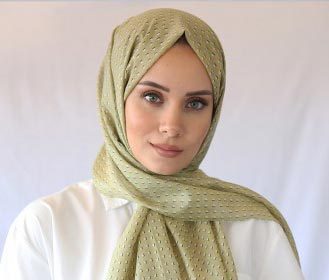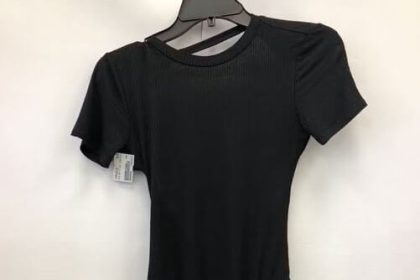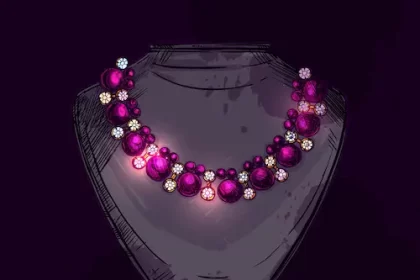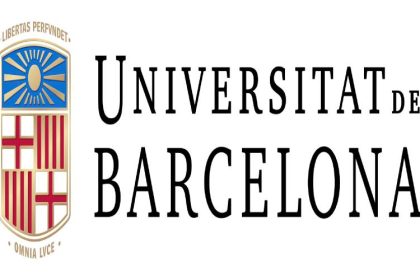Lycra fabric, also known as lycra, spandex and elastane, is a popular fabric with very high elasticity. It is interesting to know that Lycra is actually the name of the brand that produces this fabric; But with the passage of time, the fabric also became famous among people with the same name. If you want to know more details about this fabric, read this article.
What is lycra fabric?
Lycra fabric is a high-quality fabric that is produced from synthetic fibers and is basically a type of polymer. A polymer is a large molecule or macromolecule that is formed from the combination of small monomer units. Polymers are available in three types: natural, semi-synthetic and synthetic. Lycra fabric is in the third category.
What are the most important features of lycra fabric?
1. Without damaging its tissue, it stretches 5 to 8 times more than its actual size.
2. Lycra fabric's ability to absorb moisture and breathability is very high.
3. It cannot retain heat very well.
Lycra fabric is produced in which country?
This fabric has factories in more than 90 countries and people all over the world have direct access to it. Although this fabric was first produced in the United States, today the largest producing country is China.
A few important points about Lycra fabric

The production of lycra fabric brought about a huge change in the fashion industry. It also created a new direction in the concept of clothing and its comfort; A path that paved the way for new concepts and designs. Finally, lycra brought an exceptional quality to fabrics and provided possibilities that were not possible before. For a complete explanation, it is better to explain this concept with an example.
Before the production of lycra, it was very difficult to wear jeans and walk with them, due to the stiffness of the denim fabric; But when lycra came along, it added an interesting stretch and comfort to jeans. The reason for this is the presence of small amounts of elastin in denim fabric.
What is elastin?
1. Elastin is a type of synthetic fiber that is made in polymer solution tanks.
2. Part of this molecule is elastic and the other part is rigid. This makes this thread both soft and strong.
3. Elastin has recovery properties; so that it allows the fabrics to maintain their shape after being stretched.
4. Increases the softness and softness of the fabric.
5. It is a light fiber and has high resistance to sunlight.
Types of elastin fibers can be different depending on its molecular polymer chains. Its type and amount in the fabric also depends on the type of clothing. Before the advent of elastane, sportswear such as cotton shirts, shorts, and swimsuits were made with knit fabrics. clothes that were very heavy and their level of comfort was also low; But after the production of elastin, a new concept called “comfort” was created in clothes. For more explanation, it is better to examine the history of Lycra fabric.
History of lycra fabric
This brand was first established in 1958 by a person named “Joseph Shivers”; But after a short time, it was transferred to another company named Koch. Koch itself was a subsidiary of another company called Invista (a leading materials development company).
Until now, Invista company continues to operate strongly by maintaining the Lycra brand trademark. Lycra brand is also a leader in the production of fabrics that have elastane.
1960s, global introduction of lycra fabric
In this decade, Lycra fabrics revolutionized the way other fabrics were used. As we said, in this period, light clothes replaced thick and heavy clothes, and people got to know a new concept of comfort and convenience when wearing clothes.
Also in 1960, members of the French Olympic ski team were the first high-profile sports figures to wear lycra. This incident caused Lycra fabric and its important fibers to spread to other sports clothes in a short period of time.
1970s, the impact of lycra fabric on the fashion industry
In this decade, the lycra brand made the use of this fabric a style trend of the 1970s by influencing the disco fashion and by producing attractive clothes.
1980s, the peak of Lycra's popularity
Lycra fabric became so popular in this decade that it became the 80's fashion in a word. All classes of society wore different types of lycra clothes and clothing designers designed lycra clothes in different models according to the needs of the society.
For example, Ezzedine Ali, a dress designer from Tunisia, drew most of the society's attention by designing a collection of clothes made of lycra fabric. His clothes were completely absorbed by the body, and because the material of the fabric was such that it increased the absorbency of the clothes several times, he faced a lot of criticism from the traditional people. However, many people also welcomed these clothes. To the extent that this fabric was able to register its name in the fashion of this decade. Even by the end of the decade, lycra also produced underwear and socks.
From the 1990s until now, the stabilization of Lycra's position
In this decade, the popularity of lycra fibers also reached men's clothing. Also, since it started in the decades of 2000, 2010 and 2020, Lycra brand continues to be very successful in producing the needs of the people by producing innovative fibers and different fabrics and it is a kind of original fabric.
How is lycra fabric produced?

Since lycra is a synthetic fiber, all its production steps are carried out in laboratory environments. It is also natural to use chemicals in the production process; But this use is only until the raw materials for the production of fibers are obtained. As we said, the rest of the steps are done in a laboratory.
In general, there are four ways to make lycra fabric. But it has been a long time since many of these methods have become obsolete. While some manufacturers may use reactive spinning, wet solution spinning, or extrusion to produce elastane products, today, dry solution spinning is the production method used by approximately 95% of global lycra manufacturers.
Chemical process of lycra fabric production
1. This process begins when a chemical substance is mixed with a monomer to create the prepolymer that is supposed to act as the main material of Lycra; The resulting solution is then subjected to high temperature and pressure to stimulate the chemical reaction and create the prepolymer.
2. The prepolymer is then exposed to an acid to create another chemical reaction called a chain extrusion reaction. The substance that finally results from this reaction is thick, sticky and slimy.
3. In the next step, they use a solvent to dilute this solution to make it easier to work with.
Lycra fabric fiber production process
1. The solution is loaded into a cylindrical device called a fiber production cell. This device has a specialized rotating part and after the solution is loaded into it, the device starts rotating to direct the solution towards the main spinning stage.
2. After the spinning process, the solution comes out in the form of fibers from the other side of the spinner. But this fiber is not ready yet.
3. In order for the fibers to change state (solidify), they must be exposed to heated nitrogen.
4. Finally, when the state of the fibers changes, they completely exit the spinner and enter the air pressure device. The air pressure machine turns the fibers into filaments.
5. After the process is completed, the obtained fibers or yarns are sent to the textile factories in large spools.
What are the uses of lycra fabric?

As we said, Lycra fabric is used in a wide range of textiles; But the main use of lycra is to increase the overall elasticity of the fabric. For example, if some spandex fibers are combined with polyester, cotton or wool, the final fabric will have great stretch. Note that without Lycra, these garments have much less stretch. Of course, Lycra should not be confused with plastic.
In general, lycra is popular in all types of form-fitting clothing, such as gowns, loungewear, underwear, and even girdles and athletic socks.
What is the price of lycra fabric?
Due to the unique features of this fabric, its price is significantly higher than other synthetic fabrics such as polyester. In fact, the higher the amount of elastin in the fabric, the higher its price. For example, ballet and cycling costumes made of lycra and elastane are very expensive.
Also, in general, lycra fabric and all its similar fabrics have a relatively high price in the international market due to their unique elastic properties, and textile manufacturers are willing to pay very high costs to buy it due to this extraordinary elasticity. Although the price of lycra fabric is different according to the type of clothing; But we must note that market fluctuations also affect the price of lycra fabric.
Different types of lycra fabric
Although there are different ways to make this fabric, there is no clear difference between lycra, elastane and spandex. For a more detailed explanation, we examine these three terms together with a general view:
1. lycra, It is an authentic, reliable and high-quality brand that produces a variety of fabrics with elastane in the market.
2. The term elastin It is mostly used in the European region and every European person is familiar with this word. Elastin is literally the best term we can use to describe this type of fabric.
3. spandex; Although many people think spandex is a trademark, no company has actually registered the trademark. Spandex is actually a term used in the past by the DuPont company to describe the developed polyurethane fabric process.
What is the effect of lycra fabric production on the environment?
First of all, we must say that DuPont is one of the world leaders in sustainable and safe elastin production processes. Although the production process of elastane fabrics requires high levels of energy and the use of toxic chemicals, its production is not inherently harmful to the environment. Unlike materials such as nylon, lycra raw materials are not produced from renewable resources.
In contrast, these materials are completely produced in the laboratory. Some rumors suggest that carcinogenic chemicals are used in the production process of lycra; While a scientific research on the workers of the lycra production factory in Sweden, show that the production process of this fabric is not dangerous. However, no other studies have been conducted to investigate the effect of elastin production on workers in other countries. Please note that the mentioned items are only taken into account until the production stage of this fabric. Because when consumers buy this fabric, the story changes a little.
For example, reports indicate that more than 60% of waste in waterways is made up of non-biodegradable synthetic textile fibers. Because whenever consumers wash their lycra clothes, the elastane fibers tear and contaminate the water. It may even take thousands of years or even millions of years for all the Lycra in the world to decompose, and unfortunately, in the meantime, the giant garbage created pollutes the world's important oceans, which is not good for the future of the planet.
final word
Lycra fabric is one of the most important, popular and widely used fabrics in the textile industry. In this article, we checked all the dimensions related to this fabric. If you have also had the experience of using this fabric in different clothes, please share your thoughts with us.
RCO NEWS
















